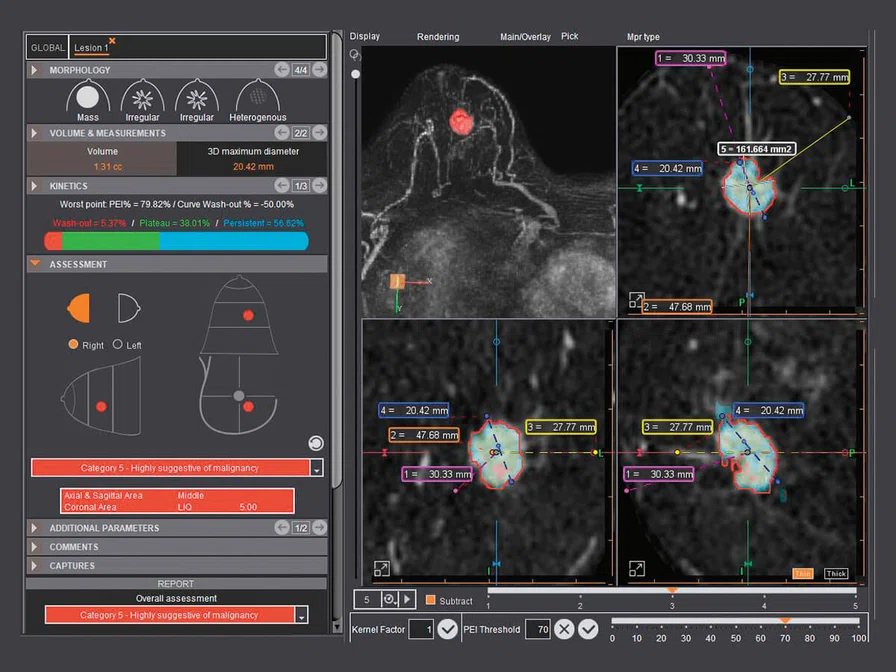Figure 1.
Coordinates of a targeted lesion in BreastLoc. Image provided by Olea Medical.
Figure 2.
A BI-RADS® 5 lesion segmented in BreastApp. Image provided by Olea Medical.
result


PREVIOUS
${prev-page}
NEXT
${next-page}
Subscribe Now
Manage Subscription
FOLLOW US
Contact Us • Cookie Preferences • Privacy Policy • California Privacy PolicyDo Not Sell or Share My Personal Information • Terms & Conditions • Security
© 2024 GE HealthCare. GE is a trademark of General Electric Company. Used under trademark license.
TECH TRENDS
Solution streamlines multiparametric breast MR workflow
Solution streamlines multiparametric breast MR workflow
In today’s fast-paced breast imaging workflow, intelligent MR applications can provide the information clinicians need to enable precision medicine and patient-centric care. breastscape® v1.0 from Olea Medical is an automated, didactic and standardized breast imaging solution designed to streamline radiologist workflow for multiparametric breast MR. It is now available on GE Healthcare’s Edison™ platform as part of the MR Smart Subscription or as standalone server-client software that can be installed on customer provided hardware.
Two key plug-ins comprise breastscape®: BreastApp and BreastLoc. BreastApp assists the radiologist in visualization, analysis and reporting for multiparametric breast MR exams. BreastLoc provides tools to assist with MR-guided breast biopsy, including automatic location of the targeted lesion and surgical planning report generation.
To do so, BreastLoc includes multivendor grids and blocks models. Lesion coordinates are computed as well as the rotation of the block and the length of introduction of the biopsy needle (Figure 1). By providing automation, BreastLoc improves the clinician’s interventional planning workflow.
BreastApp delivers automatic computation of parametric maps for the diffusion and dynamic contrast enhancement (DCE) series in a customizable interface. In one click, the lesion is segmented and radiologists can review automatic measurements and kinetics information of the lesion (Figure 2). The solution offers a dedicated layout supporting subtraction and fusion with morphologic series. All findings are automatically included in the fully integrated BI-RADS® Atlas guided report and exported directly to PACS, enhancing efficiency and saving time.
Another key feature of BreastApp is the follow-up mode to track treatment response effectiveness. This mode allows quantitative analysis of a lesion’s evolution over time. With the integration of a co-registration algorithm between breast MR exams, BreastApp makes follow-up evaluation easier.
BreastApp is an adaptative solution. Compatible with all scanning protocols, BreastApp can seamlessly adjust to post-process breast MR data acquired within an institution or even in ancillary facilities throughout the healthcare system on various vendor’s scanners. This also includes the ability to post-process emerging protocols, such as the ultrasfast DCE for breast screening exams.










